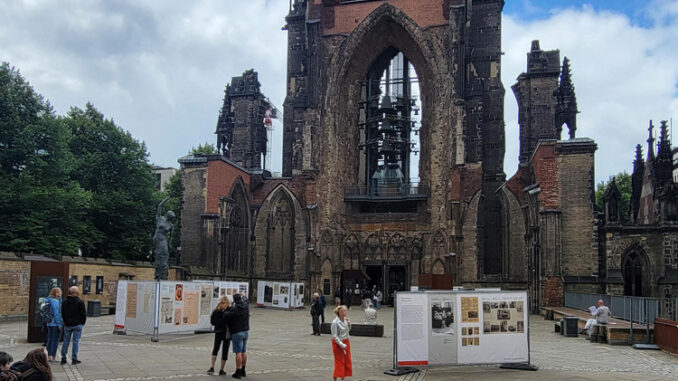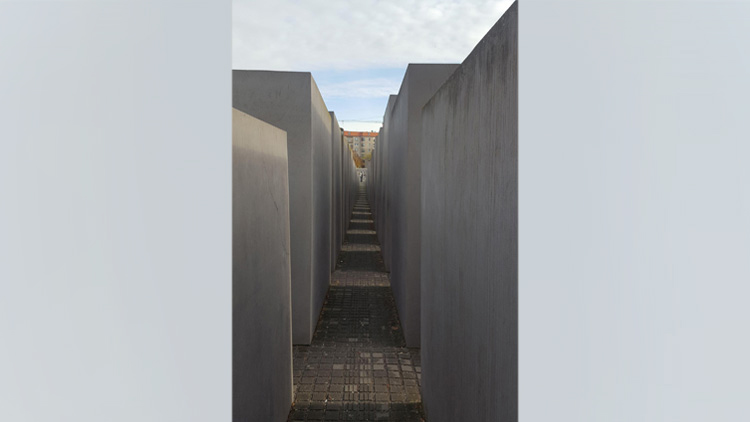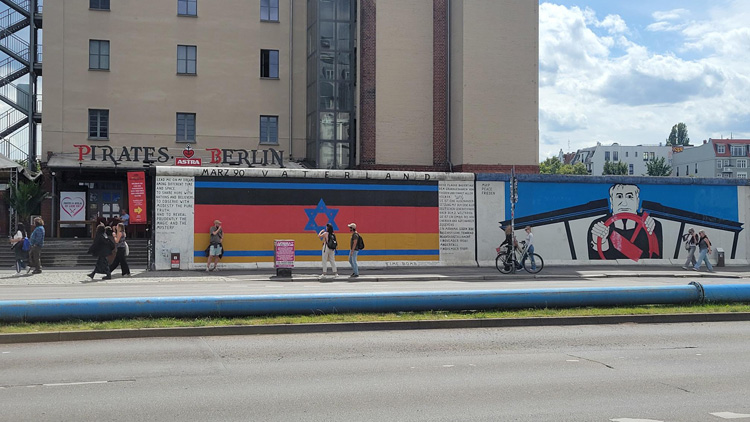
It was July of 1943. Bombs rained down from the sky over Hamburg, Germany. Residents fled for their lives as the city was engulfed in flames. The bombs were being dropped by British and American warplanes. The global struggle known as World War II had been raging for nearly four years. The war began when Germany, controlled by the Nazis [a racist and anti-democratic political party], invaded Poland in September of 1939. British and US forces hoped the air assault would degrade [to reduce in strength] Germany’s ability to continue the war.
The attack on Hamburg became one of the most destructive and deadly bombings in history. St. Nikolai Church (above) was just one of thousands of buildings destroyed in the bombing. Its ruins now house a war memorial and museum. The museum seeks to educate people about World War II. It has exhibits on the Hamburg air raids and on Nazi disinformation [false information that is spread on purpose to trick people]. The ruined church encourages people not to forget the horrors of war and the dangers of extreme political groups like the Nazis.
There are many memorials to the victims of World War II across Germany. In the decades following World War II, the German government worked hard to educate people about what happened before and during the war. After the Nazis rose to power, they ended Germany’s democracy. They waged war against the nations of Europe. And from 1933 to 1945, they persecuted and killed Jews across Europe in an event known as the Holocaust. The Nazis killed six million Jews as well as millions of people from other groups.
Today, every German student is expected to learn about the Nazis and the Holocaust. German educators hope these educational efforts will prevent similar tragedies from happening in the future.

In Berlin, visitors can visit the Memorial to the Murdered Jews of Europe. The memorial houses a maze of more than 2,700 cement pillars. It opened to the public in 2005. About half a million guests per year visit the memorial. While there, visitors can learn more about the victims of the Holocaust and the events that led to it.
World War II was a disaster for Germany. Cities were destroyed and millions died. After losing the war, the country was split into two separate nations. They were called East Germany and West Germany. Germany’s capital, Berlin, was also split in two. A structure known as the Berlin Wall divided the city. This was a difficult period for many Germans. When East and West Germany finally reunited in 1990, the Berlin Wall was torn down. However, many sections of the wall still stand as memorials. Artists have painted murals along one stretch of the wall. That area is now known as the East Side Gallery. It stands as a reminder of those challenging times.

What Do You Think? Why would many Germans want to remember dark and challenging periods of their nation’s history?
Photo Credits: Brian Hauser



